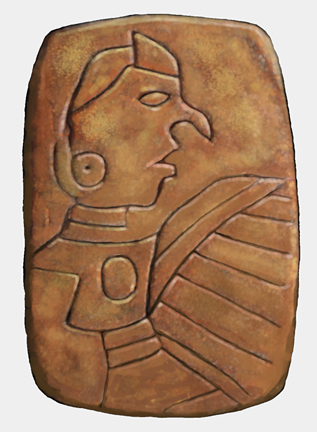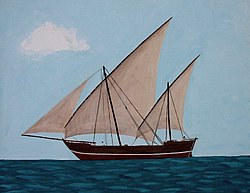Age of Discovery/Cahokia
- Before you start:
- Check if you understand our "Archaeological Vocabulary".
- Read the sources.
- Metropolitan Life on the Mississippi
- Where is Cahokia located? Give directions!
- How many people lived in Cahokia?
- What is so special about Cahokia?
- Living off the land
- How did people live 4000 years ago?
- How did corn cultivation change their life? Describe two effects!
- Give 4 reasons why people left Cahokia.
- When did they leave?
- "Augmented Reality"
- Go to the website.
- Watch the intro video (2:12)
- Scroll down and click on "BACK TO THE CITY OF THE SUN"
- Watch the video (You can fast forward to 5:00!)
- What is augmented reality? Give a short description.
- What do you think of it? Give your opinion.
- Metropolitan Life on the Mississippi
Pre-working
You will understand more if you understand these words before the visit.
Archaeology - the scientific study of material remains (such as tools, pottery, jewelry, stone walls, and monuments) of past human life and activities
Agriculture - the cultivation and breeding of animals, plants and fungi
Artifact - an object formed by humans
Ceremonies - ritualistic event with a purpose, usually performed on a special occasion.
Flintknapping - the shaping of flint, obsidian or other stone to manufacture stone tools
Granary House - storehouse or room in a barn for threshed grain or animal feed.
Mound - a heaped pile of earth, gravel, sand, rocks, or debris. Most commonly, mounds are earthen formations such as hills and mountains, particularly if they appear artificial.
Pottery - is the process and the products of forming vessels and other objects with clay and other ceramic materials, which are fired at high temperatures to give them a hard, durable form.
Working
Metropolitan Life on the Mississippi
Imagine an ancient Native American settlement where people built pyramids, designed solar observatories and, we must report, practiced human sacrifice.
These weren't the Maya or Aztecs of Mexico. This culture rose in the Mississippi Valley, in what is now Illinois, about 700 A.D. and withered away about a century before Columbus reached America. The ancient civilization's massive remains stand as one of the best-kept archaeological secrets in the country.
Welcome to the city of Cahokia, population 15,000.
North America was dotted in those days with villages, strung together by a loose web of commerce. An Indian trader paddling down the Mississippi River during the city's heyday between 1000 and 1150 couldn't have missed it.
Cahokia was the largest city ever built north of Mexico before Columbus and boasted 120 earthen mounds. Many were massive, square-bottomed, flat-topped pyramids -- great pedestals atop which the leaders lived. At the great plaza in the city's center rose the largest earthwork in the Americas, the 100-foot Monks Mound.
Around the great urban center, farmers grew maize to feed the city-dwellers, who included not only government officials and religious leaders but also skilled tradesworkers, artisans and even astronomers. The city was the center of a trading network linked to other societies over much of North America. Cahokia was, in short, one of the most advanced civilizations in ancient America.
Source: Washington Post:Cahokia By Nathan Seppa, Wednesday, March 12 1997; Page H01
Living off the land
Before Cahokia's rise, people had been living in many parts of North America for thousands of years, making a living as gatherers of edible wild plants and hunters of animal meat. More than 4,000 years ago, Indians in much of the current United States cultivated squash, sunflower and other plants to supplement wild foods. Between 1,000 and 2,000 years ago, corn cultivation spread northward from Mexico, where the plant was domesticated.
As a corn-based economy grew in the fertile Mississippi Valley, providing a reliable food source all year, populations rose and villages grew. About 1000 A.D., Cahokia underwent a population explosion.
Along with corn, Cahokians cultivated goosefoot, amaranth, canary grass and other starchy seeds. Preserved seeds of these species have been found in excavations at Cahokia. Although the people farmed without the wheel or draft animals, corn production soared and surpluses may have been stored in communal granaries on the mounds.
---
As population grew, the ratio of people to arable land also rose. In the American Bottom, a small increase in water levels could have rendered much farmland useless. Wanton tree cutting along nearby bluffs caused unchecked erosion, making cropland too marshy for corn, Milner says. Worse, a global cooling trend about 1250, called the "Little Ice Age," may have hurt the growing season.
Deforestation required longer walks for firewood. Charred remains show that Cahokians burned oak and hickory in the early years but used energy-poorer soft woods later, a sign of problems, Iseminger says. The stockade[1] alone required as many as 20,000 poles. Tree cutting certainly destroyed wildlife habitat. And how many deer would live near a concentration of 15,000 people, many armed with bows and arrows?
For Cahokians, the grass evidently looked greener elsewhere. Buffalo, arriving from the West, reached areas just across the Mississippi in the 1200s and 1300s, Hall says. The choice may have been to compete with thousands of neighbors for firewood and eat corn and fish or to live differently, following the migratory buffalo and eating red meat.
All of these "centrifugal forces," in whatever combination, grew strong enough to fling people away from Cahokia over time, Smith concludes. Their society "devolved" and gradually returned to small-village life, becoming archaeologically invisible because they left too little evidence to be traced 700 years later.
Source: Washington Post:Cahokia By Nathan Seppa, Wednesday, March 12 1997; Page H01
"Augmented Reality"
- Go to the website.
- Watch the intro video (2:12)
- Scroll down and click on "BACK TO THE CITY OF THE SUN"
- Watch the video (You can fast forward to 5:00!)
- cahokiamounds.org
The project will enable visitors to “see” structures – once visible in the pre-Columbian city – superimposed on the present landscape. To activate the AR components, a hand held device is used to scan visual markers placed in strategic spots. The technology calculates the orientation of a marker to position and stabilize 3D models upon the real world environment. Two of the Monks Mound initiatives are a reconstructed panoramic view of the entire Ceremonial Center and a sacred temple displayed approximately 50 feet from the viewer.
video
art
Weblinks
Mississippian_culture![]() (English)
Cahokia
(English)
Cahokia![]() (English)
(English)
- ↑ A stockade is an enclosure of palisades and tall walls, made of logs placed side by side vertically, with the tops sharpened as a defensive wall





